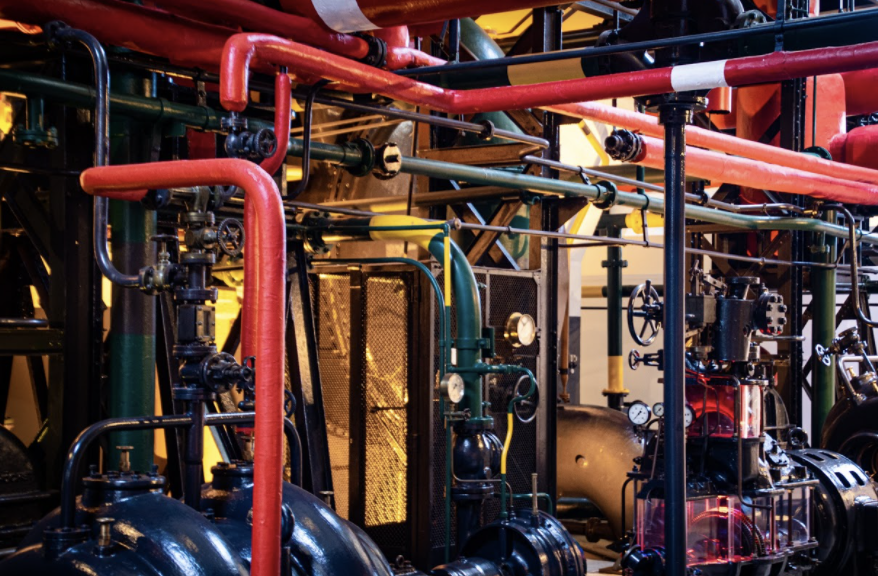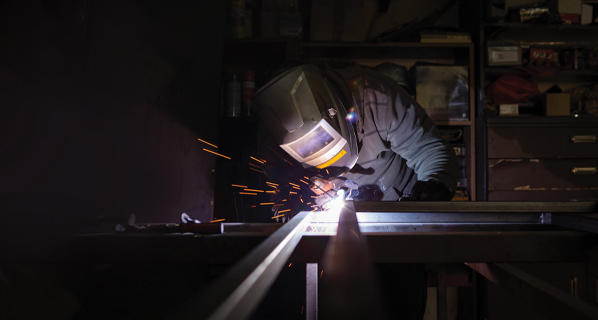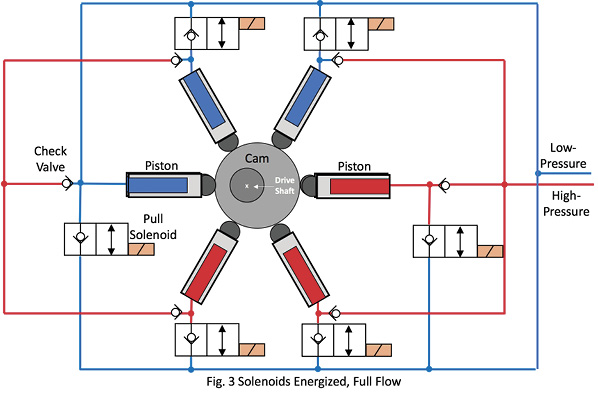How Smart Hydraulic Equipment Improves Performance
By Emily Newton

The Industrial Internet of Things (IIoT) has drastically changed how company leaders gather information, make decisions, troubleshoot problems, and boost efficiency. It’s no surprise that people are investigating how smart sensors and other hydraulic system technologies could reduce costs, increase output, and help companies stay productive.
Here are some of the most common prospective benefits that drive company decision-makers to adopt smart technologies or strongly consider doing so. Knowing about them could make it easier to justify investments in intelligent hydraulic systems instead of using less-advanced options.
Enhancing visibility
Excellent monitoring for fluid control systems helps teams stay on top of machine functionality. It’s easier to resolve issues after learning about them and before significant problems result. Similarly, having data to verify that a system is operating correctly gives peace of mind that can translate to better profitability. Surprises are costly, but smart systems can reduce or eliminate them by offering accurate, real-time information.
It’s particularly beneficial if the networks that keep the relevant parties up to date on hydraulic systems connect to the cloud. An authorized person could be anywhere and continue to receive new information as it becomes available. It’s also possible to see everything on a single dashboard. That makes it easier to compare performance and confirm the return on investment that a piece of equipment offers. Conversely, it might signal when upgrades are needed.
Long-range wide area network (LoRaWAN) technology is advantageous for industries that use hydraulic systems. It can transmit operational data several times farther than some other methods. For example, data logging uses sensors directly on equipment to monitor status. Technicians receive alerts when conditions fall outside a defined range. LoRaWAN is also scalable. Moreover, although it’s commonly hosted in the cloud, that is not a requirement. The versatility of remote monitoring equipment makes it an attractive and easy-to-implement solution.
Accelerating diagnostics
Parts fail, even with the improved visibility IIoT brings. Fortunately, smart equipment can help technicians identify the root causes faster, reducing the overall time that something is out of commission. For example, hydraulic systems commonly have pumps. These components convert an electric motor’s mechanical energy into hydraulic energy. An internet-connected variable frequency drive could collect data about a pump’s health, providing the information in an easily accessible format.
Sometimes, those details warn technicians of imminent failures, letting them order new parts before components break. That’s why many professionals advocate for predictive maintenance rather than reacting to known problems. However, even if IIoT does not prevent a breakdown, it can provide the historical details that let diagnosticians rule out issues and narrow down possible abnormalities. For example, a sensor can provide details about flow rate, pressure, and other useful specifics.
Technicians may even see those details before making a service call, giving them a clear idea about how to tackle a problem before even arriving on-site. Unexpected downtime can be extremely costly for a company or industry that uses hydraulic systems. However, smart equipment can often eliminate it. In other cases, it substantially reduces the pause in operations that failures and the associated maintenance appointments cause.
Improving safety
Advancements in smart hydraulic equipment also contribute to safer worksites and practices. People receive training to operate such machinery safely. However, when the products become smarter due to their connected features, users tap into information that could help them avoid accidents or other unintended consequences. Some items could also prevent operator fatigue that could increase the likelihood of injuries.
For example, Hitachi is testing extra-large hydraulic excavators at an Australian mining site. Reports about the trial indicate that autonomous operating features allow one operator to manage multiple excavators simultaneously via remote controls. Moreover, these high-tech machines have collision-avoidance and vehicle-stability features. Those don’t remove the need for operator skill, but they reduce the challenges operators face.
Other companies offer hydraulic-powered machines with customized control settings. An operator can use an app, key fob, or another identifying item to allow an excavator to recognize them. This allows the equipment to automatically change to the settings the person uses most often or prefers.
Similarly, if it has a smart control panel and allows button reconfiguration, operators could store their desired settings, then immediately retrieve them during their next shift. These advancements prevent workers from becoming distracted by fiddling with buttons and settings.
Facilitating appropriate maintenance schedules
Keeping hydraulic equipment well maintained is crucial for helping it perform well. Equipment generally comes with an owner’s manual that recommends how often to perform vital preventive measures.
For example, clean filters help hydraulic equipment function properly. Contamination can adversely impact productivity and even pose safety risks. Manufacturers typically base their recommendations on expected usage, considering metrics such as the number of hours in service. However, additional factors like environmental conditions can make filter changes necessary sooner.
The most thoughtfully designed hydraulic systems accommodate future maintenance needs. This includes cutouts or windows for easier gauge monitoring or installing quick-release features on doors or covers. Additionally, IIoT can identify the best times to change filters or perform other essential tasks. Fluid contamination causes most hydraulic system failures. However, options such as particle counters can help technicians get on top of the issue before it causes a catastrophic failure.
IIoT allows moving beyond a standardized maintenance schedule and embracing one personalized to the specific machine. Changing a filter too early can be a waste of money. However, delaying the change could cause a breakdown. A wireless data transmission system could give dependable indicators of when to perform filter changes or other routine maintenance tasks. That approach ensures hydraulic systems perform as expected and bring expected payoffs to those who rely on them.

Accelerating eco-friendly operations
People who work with hydraulic systems must abide by relevant environmental regulations. In other cases, company leaders pursue more planet-friendly operations due to increasing stakeholder pressures. Making such choices is particularly important as some legislation mandates that companies meet identified emissions targets. There are ways to combine intelligent equipment with hydraulic systems and get eco-focused results.
In one case, a European Union-funded project investigated the role that hydraulic equipment could play in smart logging operations that make wood production more sustainable. One machine developed for the project includes a hybrid hydraulic crane system that recovers and reuses energy via an accumulator and hydraulic transformers. This approach should bring up to 30% in energy savings, the team noted.
In another example, California-based company Hansen & Adkins uses hydraulic lift systems to transport vehicles. Decision-makers switched to smart technology on trucks in the fleet used for this purpose. Drivers can now use the controls to turn a truck’s engine on or off while loading cars, which cuts down on unnecessary idle time that raises overall emissions. Sensors also allow the rig to shut off automatically when detecting that a driver is no longer using the system.
Raising efficiency
Representatives from companies that use hydraulic systems must continually assess the most impactful ways to reduce inefficiencies. IIoT can provide a valuable window into operations, ensuring the most significant returns on investment. Moreover, since users can get real-time data to refer to at any time, it’s easy to verify whether changes intended to boost efficiency have the desired effects. When they do not, people can look at historical data to figure out what tweaks to make.
Some hydraulic pumps waste energy when the motors driving them turn too quickly. They produce excessive heat energy that negatively affects overall efficiency and could shorten the equipment’s lifespan. Thus, many companies offer hydraulic systems with variable frequency drives and servo motors. They allow using a lower rpm, plus letting the rate fluctuate depending on how system demands change.
Hydraulic systems with smart and energy-efficient components safeguard them from excessive fluid friction, allowing operators to act before permanent damage occurs. Prioritizing energy-efficiency requires a multipronged approach. People must select efficient machines and components while reducing process-related waste. IIoT can provide valuable data that shows where inefficiencies exist and highlight their potential causes. People can also use the data to set goals, making it easier to determine when progress occurs and what facilitated it.
A bright future for smart hydraulic equipment
Professionals who use hydraulics were not the earliest adopters of smart technology, and some still balk at investing in it. However, these examples highlight how connected IIoT equipment could be a game-changer for professionals who use it strategically to meet operational goals.
Anyone thinking about purchasing smart hydraulic equipment should remain mindful that it typically takes time to see changes. Similarly, technicians may need specialized training to interpret the data provided by predictive analytics tools and other products that help hydraulic systems function more effectively. However, spending adequate time and money on such a transition makes it more likely to see measurable, long-term benefits.
Emily Newton is the editor-in-chief of Revolutionized, an online magazine covering technologies advancing the industrial sector. For more information, visit https://revolutionized.com/.







